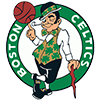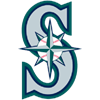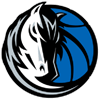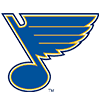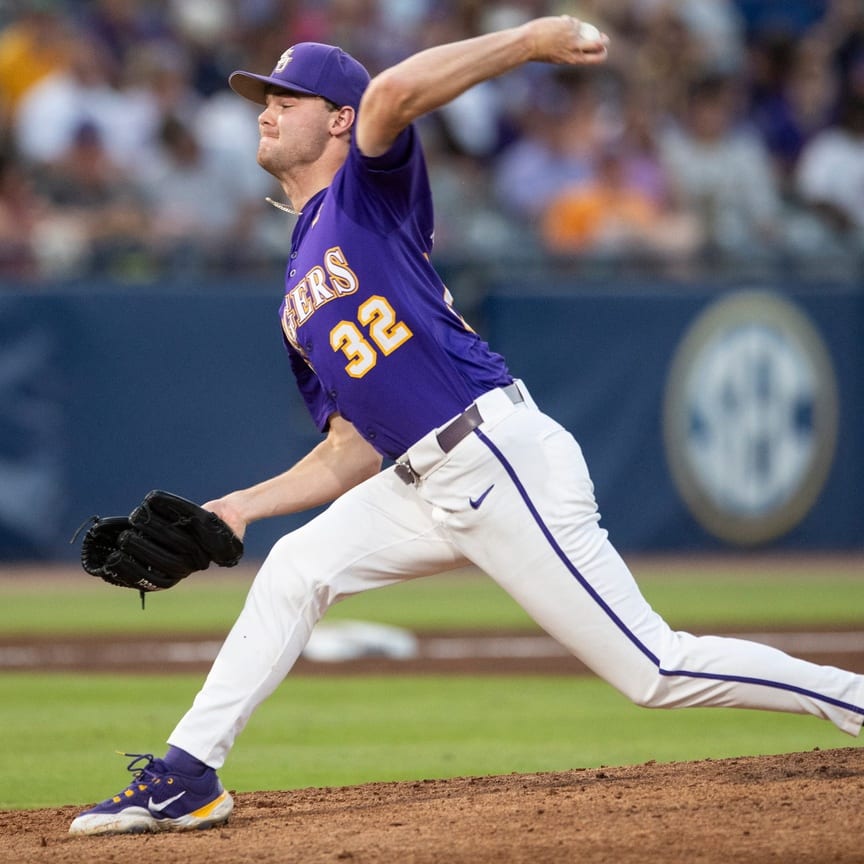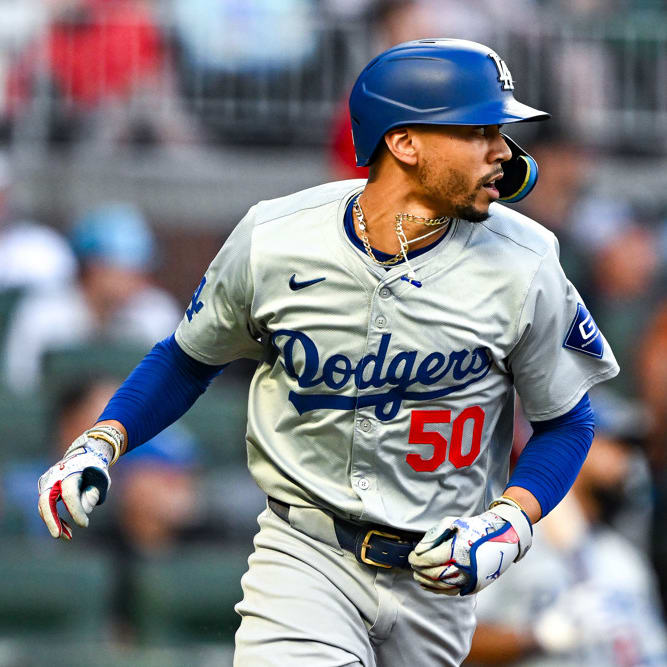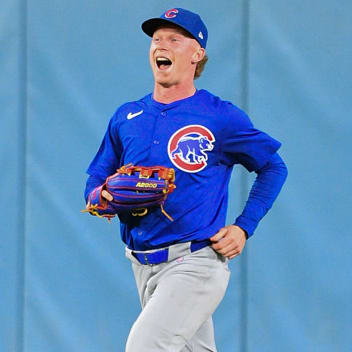The All-Star break means there hasn't been much baseball played since last week's MLB Barometer. As such, we'll have to get creative with this week's column. A backward-facing, best-of-the-first-half piece would look too similar to my article from two weeks ago, which examined that topic at the actual halfway point, so I've instead elected to stretch the format a bit for this week's focus: predicting the biggest risers of the second half.
To build this list, I've picked one player at each position who meets the following two criteria:
- His xwOBA is higher than his wOBA
- His wOBA since the start of June is higher than it was through the end of May
For the two pitchers, we'll use the same methodology, using SIERA and ERA instead of xwOBA and wOBA. This should get us a set of players whose underlying numbers suggest future improvement and whose recent trend suggests some of that improvement has already begun.
This isn't explicitly intended as a "buy-low" list, but it's something close to it. Whether you can truly buy low on these players depends on the extent to which their current owners care about their recent performance or their expected statistics as opposed to their season-long numbers. In any case, you'll likely have better luck finding buy-lows in this category than you will by searching for players whose overall numbers are in line with preseason expectations.
We'll go with double the usual number of risers this week, with no fallers to follow, so apologies if you were feeling particularly negative today and were hoping for a piece that matched that energy.
RISERS
 Triston Casas, 1B, Red Sox
Triston Casas, 1B, Red Sox
wOBA, full season | xwOBA, full season | wOBA through May 31 | wOBA since June 1 |
|---|---|---|---|
.321 | .343 | .298 | .355 |
It was hard to know exactly what to make of Casas after his 27-game debut last year, as he showed elite plate discipline (20.0 percent walk rate) but also hit just .197 and pounded the ball into the ground 56.6 percent of the time, capping his power potential. In the early part of this season, things got ugly. Through May 31, he was hitting just .193/.308/.359, with his walk rate falling to a strong but more conventional 14.5 percent while his strikeout rate jumped to 28.5 percent. Even then, however, there were reasons to stay somewhat optimistic beyond just his eye, as his 13.3 percent barrel rate was quite strong and his .239 BABIP suggested he just needed some better luck. Since the calendar flipped to June, he has indeed turned things around in a big way, slashing .269/.361/.452. A .338 BABIP gets some of the credit, but he also trimmed his strikeout rate to 22.7 percent. If he can continue to whiff an average amount of the time while walking a ton and hitting for power, he'll become a very exciting player very quickly. The Red Sox still don't trust him against lefties, but he could earn that trust soon if his strong stretch continues, or the team could fall out of the race and elect to prioritize his development by testing him against tough southpaws.
 Brendan Donovan, 2B, Cardinals
Brendan Donovan, 2B, Cardinals
wOBA, full season | xwOBA, full season | wOBA through May 31 | wOBA since June 1 |
|---|---|---|---|
.343 | .356 | .316 | .383 |
I wrote up Donovan as a sleeper back in early February, but that was mostly because I saw him as an undervalued compiler, not as someone who offered any real power or speed. When he homered twice in the first series of the season, it looked as though he could be unlocking a new level, but then he didn't clear the fence again for more than a month, a stretch in which he hit .238/.307/.275. He dug himself out of the hole over the rest of the month but still finished May with a forgettable 100 wRC+ to go along with five homers and four steals. He's put on a very encouraging performance since the start of July, however, slashing .327/.406/.460 while adding four more home runs. His nine homers on the season put him on pace for 17.2 homers per 600 plate appearances, well above the 6.4 per 600 pace he was on as a rookie. He's also nearly doubled his barrel rate, which sits at 6.6 percent after finishing at 3.4 percent last year. He's still far from a power hitter, but a hitter who can play all over the diamond while hitting for a high average and providing 15-20 homers and 5-10 steals fits onto a lot of teams.
 Rafael Devers, 3B, Red Sox
Rafael Devers, 3B, Red Sox
wOBA, full season | xwOBA, full season | wOBA through May 31 | wOBA since June 1 |
|---|---|---|---|
.344 | .379 | .329 | .365 |
It hasn't been a bad year for Devers, but after he recorded an OPS of .879 or better in each of the last three full seasons, his .812 OPS at this year's break counts as a disappointment. Under the hood, though, it's hard to say anything looks very wrong. His 20.0 percent strikeout rate is right in line with his career 20.9 percent mark, while his 13.3 percent barrel rate is the second-best of his career. He's lost 44 points of batting average compared to last season, but a .263 BABIP seems to be the primary culprit, as his .251 average trails his .276 xBA by 25 points. If anything, you'd expect BABIP for a hard-hitting lefty to trend up after the shift ban, so it's reasonable to bet on some positive regression in the second half. It hasn't been BABIP luck that's keyed Devers' recent improvement, as he owns a .277 BABIP since the start of June but has a 130 wRC+, with an uncharacteristically high walk rate (13.7 percent) earning some of the credit. If the singles start falling while Devers' improved eye and additional pop stick around, he could be in line for a very productive stretch run.
 Bobby Witt Jr., SS, Royals
Bobby Witt Jr., SS, Royals
wOBA, full season | xwOBA, full season | wOBA through May 31 | wOBA since June 1 |
|---|---|---|---|
.318 | .364 | .296 | .352 |
Witt didn't appeal to me as a first-round pick during draft season, as I didn't trust someone who'd just posted a .294 on-base percentage and a 99 wRC+ to do enough with his bat to justify the price tag, even if I fully bought into his speed. I was happy with my choice through the early part of the year, as while he did sit fourth with 17 steals through the end of May, that came with a .228/.266/.430 slash line. He's added 10 more steals since June 1, but he's also done far more at the plate, slashing .306/.356/.463. He can thank a jump in BABIP from .256 to .343 for much of that improvement, but for a player with his wheels, sustaining an above-average mark in that category should be possible. If Witt's rise were due to BABIP alone, I'd be less interested, but he's also started making much more contact, striking out 16.7 percent of the time over his hot streak compared to 22.8 percent over the first two months. He hasn't sacrificed contact quality to get there, either, as his hard-hit rate has instead increased marginally from 43.1 percent to 45.1 percent. Statcast loves what he's done all year, and if he performs in line with his .290 xBA the rest of the way rather than his actual .257 batting average, he could more than justify his steep draft-day price.
 Michael Harris II, OF, Atlanta
Michael Harris II, OF, Atlanta
wOBA, full season | xwOBA, full season | wOBA through May 31 | wOBA since June 1 |
|---|---|---|---|
.313 | .330 | .241 | .383 |
Harris was included in last week's barometer, but he fit the prompt so well this week that he had to earn back-to-back mentions. His surface stats through the end of the first half remain disappointing, and that's not just because the back issue which cost him three weeks in April is putting a dent on his counting stats. His .255/.301/.424 slash line is good for just a 93 wRC+, nowhere near enough for a player who was selected in the middle of the third round in the NFBC Main Event, just ahead of Randy Arozarena (147 wRC+) and Corbin Carroll (144 wRC+). His expected stats suggest the gap between where he's been and where he's supposed to be isn't as large as it seems, as he's underperforming his .270 xBA by 15 points and his .447 xSLG by 23. He's also trending in the right direction, and he's doing so in an unexpected way. One of the biggest knocks on him as a rookie was his worryingly low 4.8 percent walk rate, so it was encouraging to see him walk at an 8.1 percent clip through the end of May even as nothing else was going right for him. He's walked just 2.4 percent of the time since June 1, but that aggressive approach has also helped trim his strikeout rate from 23.6 percent to 15.9 percent. A swing-happy Harris may be less likely to return to the leadoff spot in a deep Atlanta lineup, but it's clear that this version of Harris is the productive one.
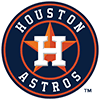 Kyle Tucker, OF, Astros
Kyle Tucker, OF, Astros
wOBA, full season | xwOBA, full season | wOBA through May 31 | wOBA since June 1 |
|---|---|---|---|
.358 | .382 | .334 | .395 |
Look at his season from one angle and Tucker seems like basically the same guy he's always been. By OPS, his .835 mark is almost an exact match for his career figure of .837. The shape of his production is different, with more walks and speed and a bit less power, but on the whole, he's still Kyle Tucker. His expected stats and recent performance suggest he could hit another level down the stretch, however. In particular, he's seemingly been short-changed in the power department. If he matches his total of 609 plate appearances from last season, he's on pace to finish with nine fewer homers (21 in total), yet his xSLG is up 31 points and his hard hit rate is up 5.6. His barrel rate is down a bit, as he's traded some flyballs for grounders, but at 8.2 percent, it's still more than enough to support some respectable pop, especially when combined with an excellent 13.4 percent strikeout rate. His barrel rate is actually marginally lower (7.8 percent) since June 1, but his results have picked up thanks to a BABIP that jumped from .282 to .330. That number could fall in the second half, but Tucker has also trimmed his strikeout rate to an elite 11.9 percent over that same stretch. If he keeps making more contact than ever while hitting the ball as hard as ever, he can give back some BABIP luck and still have a great stretch run.
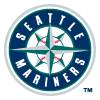 Teoscar Hernandez, OF, Mariners
Teoscar Hernandez, OF, Mariners
wOBA, full season | xwOBA, full season | wOBA through May 31 | wOBA since June 1 |
|---|---|---|---|
.320 | .348 | .287 | .376 |
Hernandez's fantasy value took a hit when he was traded to Seattle over the winter, as the Mariners play in the league's toughest park to hit in according to Statcast's wOBA park factors, but park factors alone can't explain his .230/.268/.396 line over the first two months. He still managed nine homers and three steals over that stretch, but his plate discipline (33.8 percent strikeout rate, 3.5 percent walk rate) was about as bad as it gets. Given that Hernandez had always maintained high strikeout rates and low walk rates even when things were going well, there was reason to worry that he really didn't have any more room to fall in either category. And at age 30, it wasn't crazy to believe that he was experiencing a real skill decline rather than merely a bad two months. He's since reversed that trend and appears to be back in a big way, creating a buying opportunity given that his poor season-long numbers and home park are still affecting his perceived value. Since June began, Hernandez is striking out a passable 26.2 percent of the time while walking at an 11.3 percent clip, helping him to a .285/.369/.512 slash line. His contact quality has been outstanding over that stretch, as he owns a 16.1 percent barrel rate and a 54.0 percent hard hit rate. Fears of his decline seem premature.
 Aaron Nola, SP, Phillies
Aaron Nola, SP, Phillies
ERA, full season | SIERA, full season | ERA through May 31 | ERA since June 1 |
|---|---|---|---|
4.39 | 3.85 | 4.70 | 3.86 |
The Phillies became the first team to advance all the way from the newly expanded Wild Card Round to the World Series last fall. Between the regular season and the playoffs, Nola took the hill 37 times, and the toll became apparent in his final three postseason starts, where he allowed 14 runs in a combined 13 innings. He sputtered out of the gate this year as well, recording a 4.70 ERA through the end of May while striking out just 21.5 percent of opposing batters, well below his 30.0 percent mark from the three previous seasons. In a particularly worrying development, his velocity was down, with his fastball averaging 91.7 mph after coming in at 92.9 mph or higher in each of the last five years. Since the start of June, however, he's fully back to his usual speed, with the pitch averaging 93.0 mph, and the results are turning around. He's still had too many duds recently, but his 3.86 ERA in seven starts since June began represents a big step, with his 3.12 xFIP over that stretch painting an even more encouraging picture. Most encouragingly, his strikeout rate is all the way back up, sitting at 30.6 percent since June 1. Homers remain a problem — he's allowed six in his last three starts — and his home park means that issue is unlikely to completely disappear, but a bit of positive regression there could have him looking like vintage Nola down the stretch.
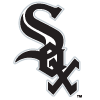 Dylan Cease, SP, White Sox
Dylan Cease, SP, White Sox
ERA, full season | SIERA, full season | ERA through May 31 | ERA since June 1 |
|---|---|---|---|
4.30 | 3.92 | 4.88 | 3.86 |
After finishing third in ERA (2.20) and fifth in strikeout rate (30.4 percent) among qualified starters last season, Cease was merely the 16th starter off the board in the NFBC Main Event. Drafters' hesitancy to fully buy in was likely linked to his 10.4 percent walk rate, a mark which stands out not just among the other contenders for an SP1 slot but among starting pitchers more broadly, as that mark was a full percentage point worse than that of any other qualified starter. Having such a notable flaw in such a key area meant that Cease had to remain an outlier in his ability to generate whiffs if he was to justify his price tag, something he failed to do in the early part of the season. He topped out at six whiffs over a nine-start stretch in April and May and ended the first two months with an above-average but hardly notable 24.2 percent strikeout rate. When combined with his 10.3 percent walk rate, that led to a 4.88 ERA. He's cut his walk rate to 7.8 percent in seven outings since the start of June, but more significantly, his strikeouts have come rushing back, sitting at 32.9 percent. That combination has gotten him to a 3.38 ERA, and the added whiffs mean he could even see the walks creep back up while still remaining productive for fantasy purposes.
 Yusei Kikuchi, SP, Blue Jays
Yusei Kikuchi, SP, Blue Jays
ERA, full season | SIERA, full season | ERA through May 31 | ERA since June 1 |
|---|---|---|---|
4.30 | 3.92 | 4.88 | 3.86 |
I'll slip Kikuchi into the end of this piece because I definitely don't want to get ahead of myself with him. We've been here before with the veteran lefty, who's had several promising runs but owns a 4.87 career ERA in five big-league seasons. We haven't been exactly here, though, as this version of Kikuchi isn't quite the same as the one we're used to. From 2020 through 2022, Kikuchi had an above-average strikeout rate (25.4 percent) and an above-average groundball rate (47.5 percent) but walked far too many batters (10.7 percent). This year's version owns a similar strikeout rate percent), but he's suddenly good at avoiding walks (6.9 percent) but bad at keeping the ball on the ground (37.0 percent). In seven starts since the beginning of June, however, those strikeout and walk marks haved jumped to 29.3 percent and 5.3 percent, respectively, a combination that can even overcome a substantial home run problem (2.1 HR/9 for the year, 1.7 HR/9 since June 1). Kikuchi isn't providing much volume, lasting no more than five innings in five of those seven outings, and it's hard to have full confidence that his improvements will stick, but he should at the very least be back on the radar.









